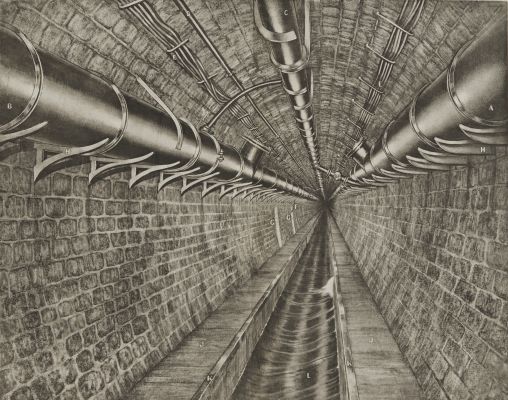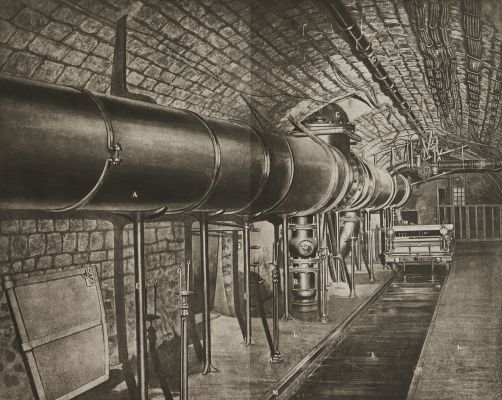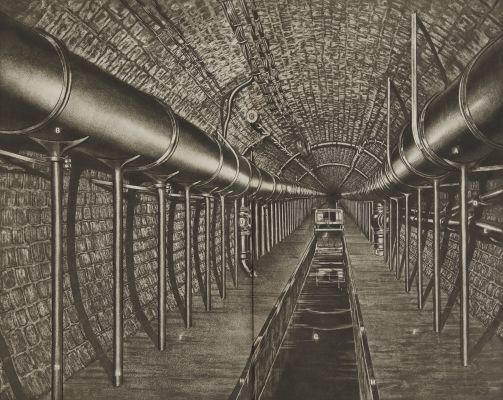
Title
Planche 13 Jonction de la galerie du pont au Change avec la galerie de SébastopolPublication
Les Travaux Souterrains de Paris V, Deuxième Partie Les Égouts; Troisieme Partie Les Vidnages, AtlasDate
1887Process
PhotogravureAtelier
DujardinImage Size
34.5 x 43 cm
By 1850 the water system in Paris was failing. Wastewater was being discharged directly into the Seine, the city’s primary source of drinking water. When Napoleon III took power in 1852 he had ambitious plans to modernize the city. In 1853 he appointed Georges-Eugène Haussmann to advance his plans and in 1855 Haussmann enlisted Eugène Belgrand as Director of Water and Sewers. Under Belgrand’s direction, Paris’s waterworks became one of the celebrated icons of 19th century technical advancement and modernization. Showing off the achievement to the world however posed significant challenges. The sewers were underground and dark, essentially rendering them invisible on the international stage. Belgrand considered it his national duty to document the accomplishment. Nadar had already proven that photographing the sewer system was possible, but Nadar’s images were dark and dingy.
Enter photogravure. By choosing large photogravures to represent the project, Begrand had the best of both worlds – photographic accuracy and the control of the engraver’s burin.
Belgrand writes in the accompanying text, the work of reproduction was difficult, because only photography could faithfully render all the details, and the light of the lamps which we had was insufficient to obtain good pictures. It was necessary to resort to a provisional installation of electric light, which made it possible to obtain proofs requiring only a few retouches. (Belgrand was generous with his description as the hand engraving is extensive.)
Here we can see a new world, a technological world. Underground, we get a glimpse of the future … we can also see the modern beauty found in the union of photography and ink.



